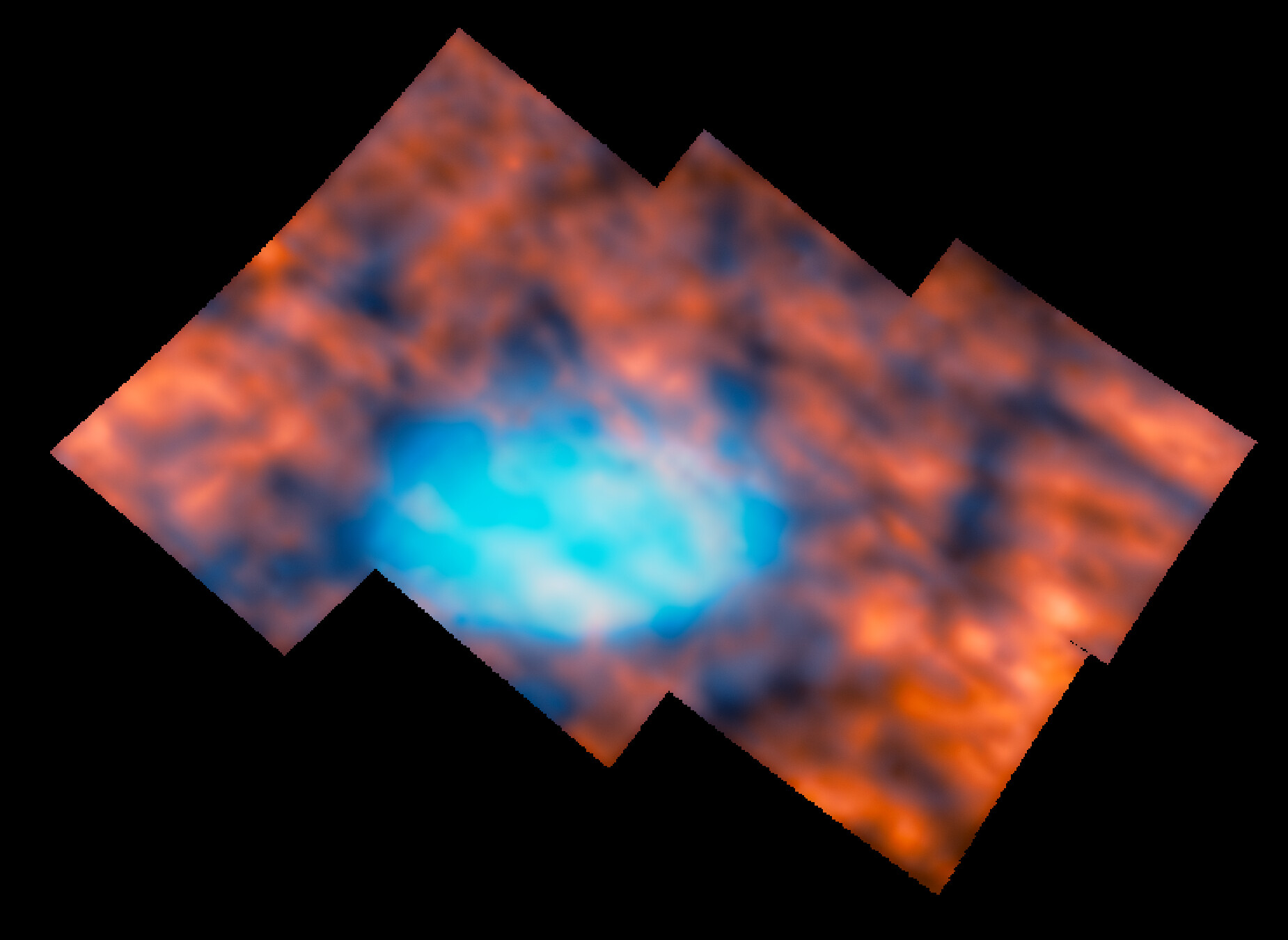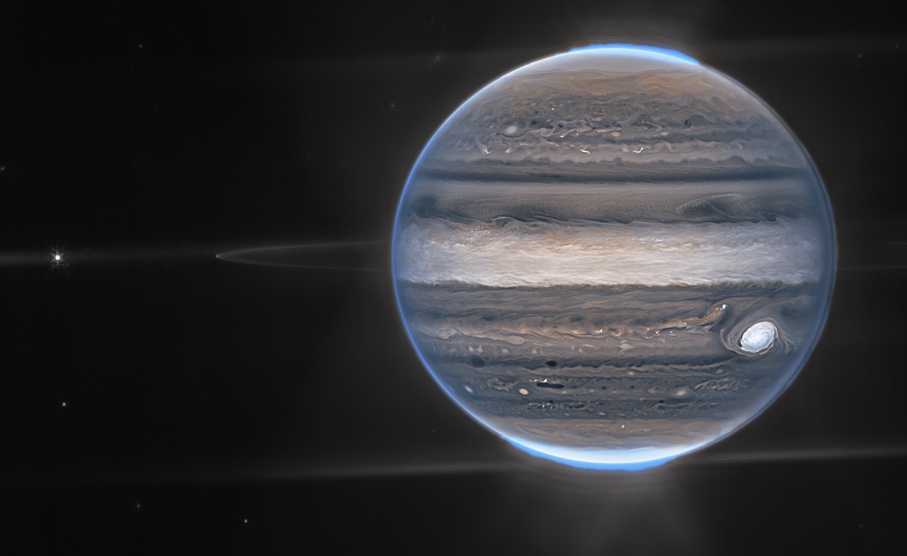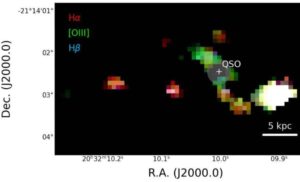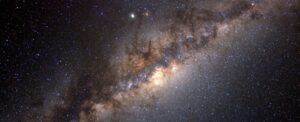Using the joint James Webb Space Telescope of NASA, the European Space Agency (ESA) and the Canadian Space Agency (CSA), a group of scientists discovered a variety of previously unseen features in Jupiter’s upper atmosphere. The features were found in the atmospheric region above the iconic Great Red Spot, an area of high pressure in Jupiter’s atmosphere that produces a massive anticyclonic storm that has been visible to astronomers since 1831.
Before the recent observations of the region, scientists thought the region was inconspicuous in nature and did not host any complex atmospheric structures or activity. However, Webb has shown that the region is scientifically interesting and is already providing scientists with more insight into Jupiter’s internal processes and its vast atmosphere.
Although it may seem easy, observing Jupiter in great detail with huge telescopes like the Webb and Hubble is difficult. The glow from Jupiter’s upper atmosphere is faint compared to the glow from the planet’s north and south polar regions, meaning that visible-light telescopes like Hubble and some ground-based telescopes have a harder time observing specific structures in the planet’s upper atmosphere. However, given Webb’s sensitivity to infrared light, the telescope is able to observe the upper atmosphere without interference from the planet’s bright polar regions. Additionally, Webb’s sophisticated engineering and size mean that it can not only collect data on the upper atmosphere, but do so in unprecedented detail.
Webb’s observations of the region around the Great Red Spot. (Credit: ESA/Webb/NASA/CSA/Jupiter ERS Team/J. Schmidt/H. Melin/M. Zamani (ESA/Webb))
Jupiter’s upper atmosphere serves as the boundary between the planet’s vast magnetic field and the inner atmosphere, and its structure is largely shaped by the interaction between the two regions. For example, the upper atmosphere, with some help from volcanic material ejected from the moon Io, produces bright northern and southern lights. However, closer to the planet’s equator, the structure of the atmosphere is largely determined by incoming sunlight, and given that Jupiter receives only four percent of the sunlight received on Earth, scientists predicted that this region will be less complex than the more northern and southern regions of the upper atmosphere.
However, this was just a hypothesis of the scientists, since the observations needed to determine the structure of the upper atmosphere in the equatorial regions were not yet available – that was until Webb’s debut in 2022.
Webb first observed the equatorial regions of the upper atmosphere, specifically a region located above the Great Red Spot, in July 2022 using the capabilities of the Near-Infrared Spectrograph (NIRSpec) instrument. The main goal of the team of scientists with the observations was to study the region and determine if the region is boring, as previously thought by scientists.
However, when Webb’s observations and data were returned to the team, they were surprised to see that the entire region above the Great Red Spot hosts a variety of complex structures and activity, including dark arcs and bright spots.
“We thought this region, perhaps naively, would be really boring. In fact, it’s just as interesting as the Northern Lights, if not more so. Jupiter never ceases to surprise,” said lead author Henrik Melin of the University of Leicester, UK.
Much of the light emitted from this region is reflected sunlight, but some of the structures and activity found in this area appear to have been altered by some mechanism other than sunlight.
“One way you can change this structure is through gravitational waves – similar to waves breaking on the beach, creating ripples in the sand. These waves are generated deep in the turbulent lower atmosphere, all around the Great Red Spot, and they can travel upward in height, changing the structure and emissions of the upper atmosphere,” explained Melin.

The atmosphere around the Great Red Spot imaged by NIRSpec. (Credit: ESA/Webb/NASA/CSA/H. Melin/M. Zamani (ESA/Webb))
Melin and others. explain in their study that these atmospheric waves can sometimes be observed on Earth. However, the waves that appear on Earth are much weaker than those observed on Jupiter by Webb. The team plans to conduct follow-up observations of these atmospheric wave patterns to study how the waves travel through Jupiter’s upper atmosphere. Additionally, understanding the wave patterns will allow scientists to understand how much energy is trapped in that region and how the structures Webb discovered change over time.
Webb’s latest observations not only expand scientists’ understanding of the Jovian upper atmosphere, but will also help inform mission planning and future science observations on ESA’s Jupiter Icy Moons Explorer, or JUICE, mission. JUICE is currently on its way to Jupiter, where it will explore the planet’s three largest oceanic moons, Ganymede, Callisto and Europa.
The observations of Melin et al. were made as part of Webb’s Early Release Science (ERS) 1373 program. The proposal for the observations was written in 2017 and was originally written to understand the temperature above the Great Red Spot.
🆕 Scientists have discovered complex features above Jupiter’s famous Great Red Spot! Read more: https://t.co/wHAiYBap2l or 🧵👇 pic.twitter.com/71J9ToJGIH
— ESA Webb Telescope (@ESA_Webb) June 25, 2024
“This ERS proposal was written back in 2017. One of our goals was to investigate why the temperature above the Great Red Spot appears high, as revealed by recent observations with NASA’s Infrared Telescope Facility. However, our new data showed very different results,” said co-author Imke de Pater of the University of California, Berkeley.
The results of Melin et al. were published in the journal Natural astronomy.
(Main image: Jupiter imaged in near-infrared light by Webb’s NIRCam instrument. Courtesy: NASA/ESA/CSA/Jupiter ERS Team/Ricardo Hueso (UPV/EHU)/Judy Schmidt)



